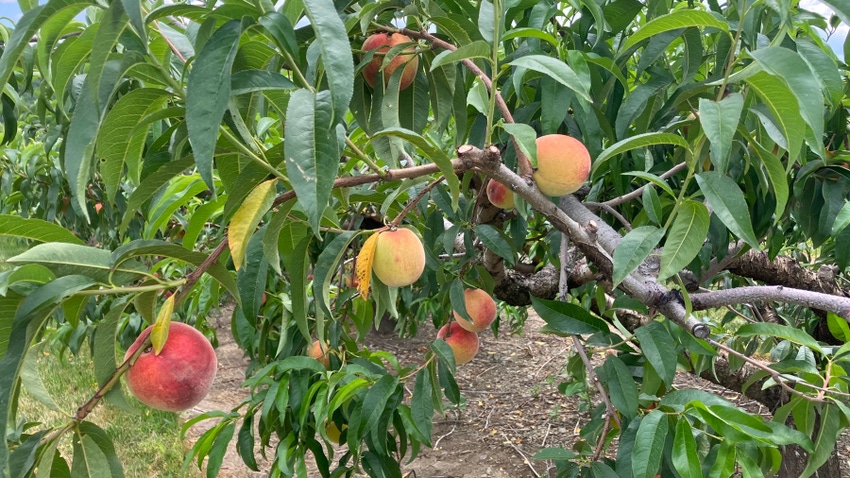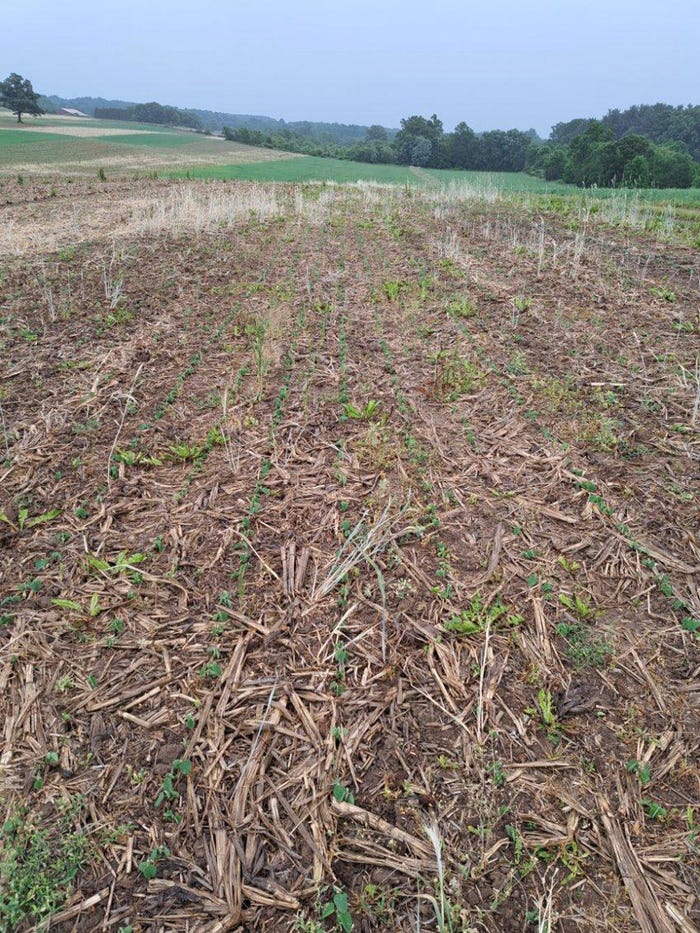
Finally, some welcomed rains arrived in the Northeast region last week.
And while it wasn’t much — Harrisburg, Pa., for example, got an inch of rain June 12 and less than an inch of rain June 14, according to the National Weather Service — anything falling from the heavens is a welcome sight, especially considering what was one of the driest springs on record in many places.
The producers taking part in our monthly Field Snapshot panel are feeling the effects of drought in different ways.
William Thiele, who co-owns an 80-head, 300-acre dairy farm in Cabot, Pa., says his farm did not see measurable rain for 21 days from May into early June.
“Some of our late-planted soybeans probably had some germination issues, which will most likely hurt the yield,” he says. “Also, our second cutting of hay has been very slow to grow because of the drought so far. We also had oats showing signs of drought stress and some yellow dwarf virus, according to PSU Extension.”
Pastures that normally would be lush this time of year have turned brown, forcing him to feed more dry hay that the farm has in stock.
The dry weather also forced some last-minute, in-the-field changes.
“One thing we did change this spring, because of the dry weather, is we decided to terminate some fields of cover crops before we planted through because we feared that the cover crop would be taking too much moisture from the soil,” he says. “Our no-till and cover cropping have been one of the benefits to helping with possible drought conditions.”

STRUGGLING YOUNG BEANS: These Pioneer Plenish soybeans were planted May 29 on William Thiele’s farm in Cabot, Pa. They are barely visible because of drought. “Some of our late-planted soybeans probably had some germination issues, which will most likely hurt the yield,” he says. (Photo by William Thiele)
Dave Hunsberger of Millerstown, Pa., downsized his farm somewhat since selling off his dairy herd in September 2019. He used to grow nearly 400 acres of crops, mostly to feed the cows, but now grows 325 acres of hay, non-GMO corn, barley and, new this year, grain sorghum.
Safe to say, the dry weather has kept his second cutting of hay to a minimum.
He also says that he shifted more corn acres to grain sorghum than he previously thought he would. Grain sorghum is a new crop he is trying this season. Hunsberger says his soils do not hold water well, so he is trying grain sorghum, a crop that is much more forgiving in drier soils.
It is being grown behind crimson clover and ryegrass. He plans to sell the grain sorghum on the cash market.
As a sales representative for Lancaster County-based King’s Agriseeds, Hunsberger says he has gotten dozens of calls from growers interested in growing a summer annual, asking about proper seeding depth and seeding rates for crops such as teff, millet, sudangrass and cowpeas.
“The key point to remember is that although summer annuals are more drought-tolerant, they need moisture to start,” he points out. “We need a plan to moisturize or just leave them in the bag.”
At Dave Wenk’s Three Springs Farm in Gardners, Pa. — where he grows 236 acres of apples, 48 acres of peaches, 4 acres of pears, smaller acreages of tart and sweet cherries, and various other fruits — the mild winter and early spring led to fears of frost and freeze damage.
Now, it’s the dry weather that has him worried.
“In my 43 years on the farm, we have never experienced drought before the end of June,” Wenk says. “Size is normal for now, but we are about a week ahead of normal.”
Drought affects fruit differently, he points out. pome fruits — apples and pears — grow in two phases. The first phase is when the tree creates “cells” that will eventually become the finished product in fall.
The second phase is when those cells fill with water. This can happen gradually, steady or even rapidly near maturity, depending on when it rains.
“We are in phase one, so the lack of rain can reduce cell numbers and size at maturity. We really don't know if this has or will happen,” he says.
On the other hand, stone fruits — peaches — will grow at a steadier rate and will respond quickly to rain or lack thereof. “We have started irrigating and plan on continuing as needed,” Wenk says. “Some of the earlier peach varieties have never been irrigated because we have never been deficient before their harvest. In all cases, reduced size will greatly reduce yields.”
Soils still thirsty
The most recent Crop Progress Report showed corn height averaging 10 inches in Pennsylvania, shorter than last year’s 14 inches at this time.
Wheat is ahead of last year’s pace, with 90% of the crop heading, and soybean plantings are ahead of schedule, too. But crop conditions have deteriorated because of the dry weather.
Only 20% of the state’s corn is rated in good condition, while 67% of the crop is in fair condition. Soybeans are faring even worse with 20% of the crop rated poor or very poor, and 55% of the crop in fair condition.
Pastures are also suffering with 30% of pasture rated in poor or very poor condition, and 54% in fair condition.
The recent rains have likely improved topsoil and subsoil moisture, but much more than an inch of rain is needed to stabilize moisture levels. The report rated 90% of the state’s topsoil as short or very short, while 67% of the subsoil was rated short or very short.
New York state is faring a little better with drought, but fruit and grape growers statewide are dealing with the aftermath of a late freeze that likely wiped out much of the state’s famed wine grape crop and a good part of the fruit crop.
The average corn plant height is 6 inches, which is around normal for this time of year. Most of the corn crop — 66% — is rated either good or excellent. Pasture is 42% fair condition, and 41% good or excellent condition.
Soybeans are 58% in good or excellent condition, while 69% of winter wheat is rated either good or excellent.
Maryland soybeans, winter wheat and other crops are ahead of schedule, but the condition of those crops is not good.
Corn is rated 24% poor or very poor, while 47% of the crop is fair. Alfalfa is 47% fair and 44% good or excellent, while 50% of other types of hay are either good or excellent.
Pasture is 37% fair and 32% poor or very poor.
Soybeans are 52% fair, while 31% of the crop is rated either good or excellent.
Topsoil and subsoil moisture levels are poor. Topsoil is 96% short or very short, while 93% of subsoil is short or very short.
About the Author(s)
You May Also Like






